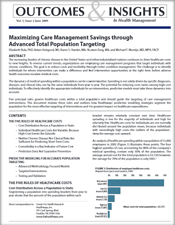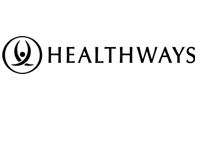Resource:
Maximizing Care Management Savings Through Advanced Total Population Targeting
This article provides five principle rules of healthcare costs, and outlines how Healthways' predictive modeling strategies can drive the greatest impact.
 Author(s): Elizabeth Rula, PhD; Adam Hobgood, MS; Karen S. Hamlet, MA; Huiwen Zeng, MA; and Michael F. Montijo, MD, MPH, FACP
Author(s): Elizabeth Rula, PhD; Adam Hobgood, MS; Karen S. Hamlet, MA; Huiwen Zeng, MA; and Michael F. Montijo, MD, MPH, FACP
The increasing burden of chronic disease in the United States and other industrialized nations continues to drive healthcare costs to new heights. To reverse current trends, organizations are employing care management programs that target individuals with chronic conditions. The goals is to reduce costs and morbidity through better condition management. The challenge is to identify individuals for whom intervention can make a difference and find intervention opportunities at the right time: before adverse health outcomes escalate medical costs.
The dynamics of medical spending within a population can be counter intuitive. Spending is not solely driven by specific diagnoses, diseases, and clinical risks, nor by the same individuals from year to year. The potential for reducing costs varies among high-cost individuals. To effectively identify the appropriate individuals for an intervention, predictive models must take these dynamics into account.
Five principal rules govern healthcare costs within a total population and should guide the targeting of care management interventions. This document reviews these rules and outlines how Healthways' predictive modeling strategies segment the population for the most effective targeting of interventions and the greatest impact on healthcare expenditures.
Outcomes and Insights in Health Management is a Healthways publication that covers scientific research that was elected to not be submitted for peer review.
